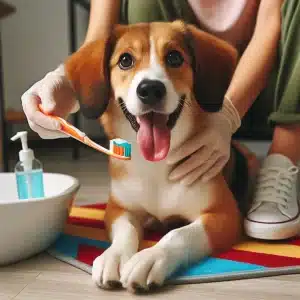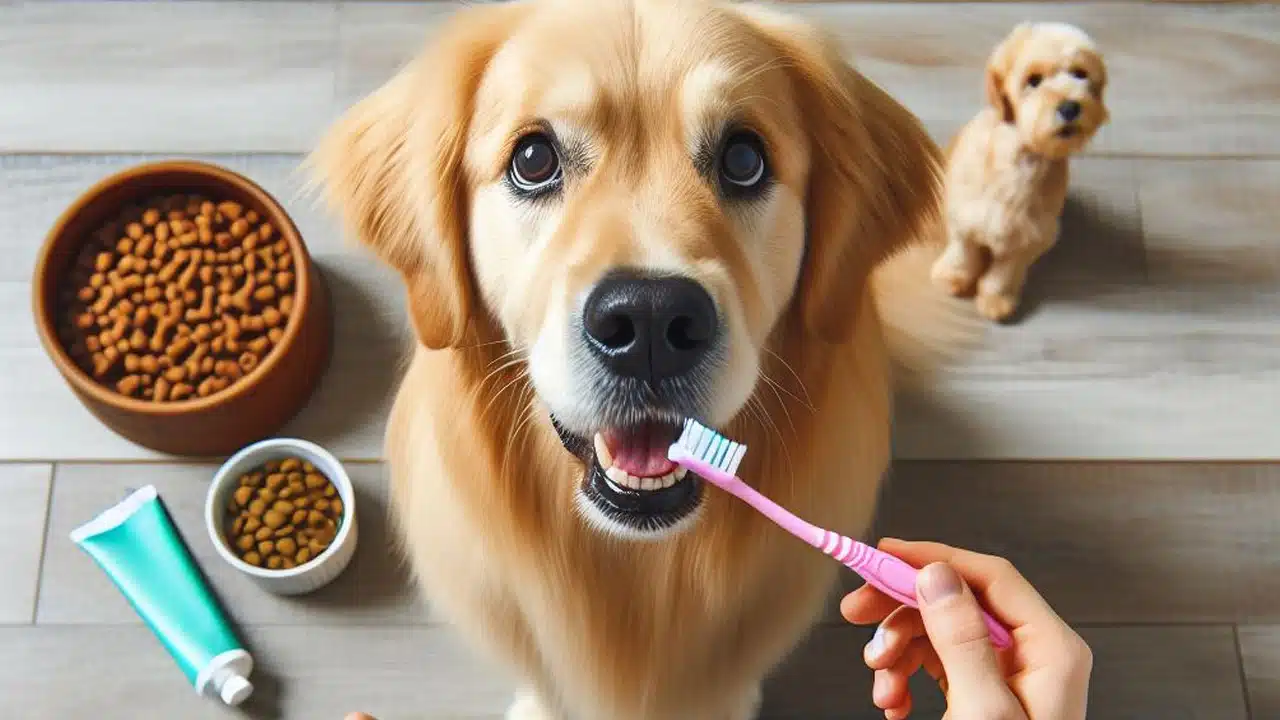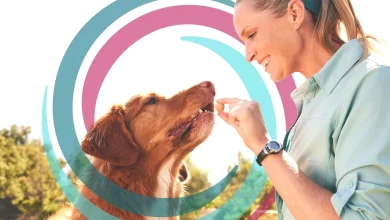Brush Dog’s Teeth
Your dog can have dental problems just as you can. You can help your dog keep his teeth pearly white and his breath fresh by brushing his teeth regularly. Brushing a dog’s teeth is not hard to do and it will keep them clean and healthy. Here’s how to brush a dog’s teeth.
Why Brush Your Dog’s Teeth?
It’s estimated that most dogs will have some degree of dental or gum disease by the time they are three years old. Dental disease can include plaque, tartar, and gingivitis. These conditions will all worsen if you do not have your dog’s teeth cleaned.
You can keep your dog’s teeth much cleaner and reduce the risk of dental disease by simply brushing his teeth regularly. This will cut down on the growth of bacteria on the teeth that produces plaque. When plaque is allowed to keep forming on the teeth it can build up and mineralize into tartar which is much harder to remove.

Brushing Your Dog’s Teeth
Brushing your dog’s teeth only takes a few minutes and it’s easy to do. You need a toothbrush made for dogs and dog toothpaste. A dog toothbrush has soft bristles, and it is specially angled so you can reach far back in your dog’s mouth. Dog toothpaste has flavored that dogs love such as peanut butter, beef, and so on. Most dogs think the toothpaste is a treat and they love it once they taste it. Don’t use human toothpaste when brushing your dog’s teeth. It contains a substance called xylitol which is harmful to dogs.
Brushing your dog’s teeth only takes a few minutes and it’s easy to do. You need a toothbrush made for dogs and dog toothpaste. A dog toothbrush has soft bristles, and it is specially angled so you can reach far back in your dog’s mouth. Dog toothpaste has flavored that dogs love such as peanut butter, beef, and so on. Most dogs think the toothpaste is a treat and they love it once they taste it. Don’t use human toothpaste when brushing your dog’s teeth. It contains a substance called xylitol which is harmful to dogs.
As far as how to brush your dog’s teeth, squeeze a little of the dog toothpaste onto the brush and insert the brush into your dog’s mouth, against the teeth. Then brush the teeth slowly and gently, the same way you would brush a child’s teeth. There is no need to rinse the toothpaste out. Your dog can safely swallow it. You should pay particular attention to the teeth on the sides and in back.
The American Veterinary Dental College recommends daily brushing for your dog’s teeth, but this is probably unrealistic for most dog owners. Brush your dog’s teeth frequently. The more you brush them, the cleaner and healthier they will be.

Other Ways to Keep Your Dog’s Teeth Clean
You can also use dental wipes to clean your dog’s teeth and you can use finger brushes instead of a toothbrush.
There are also products containing chlorhexidine for dogs. This is an anti-plaque product that you can spray in your dog’s mouth or use as a gel. Chlorhexidine is bitter unless there are other ingredients to make it taste better to your dog, but this is an effective way to get rid of plaque.
You can also give your dog high quality rawhides and other dental chews to help keep his teeth cleaner. Good chews really do help to keep the teeth cleaner and healthier. There are also some dog foods and treats which have been approved by the Veterinary Oral Health Council to improve oral health. You can find a list of those products for dogs and cats here.
Regular brushing of your dog’s teeth will help prevent dental and gum disease. Try to brush your dog’s teeth often. Use a toothbrush and toothpaste specially designed for dogs. Give your dog chews to keep his teeth cleaner. And look for treats that will help remove plaque and tartar.
Suggested Article: What Vaccinations Do Dogs Need?






One Comment